CTIA Wireless 2004
Mar 20, 2004, 7:00 PM by Rich Brome @rbrome.bsky.social
Live daily coverage of CTIA Wireless 2004, North America's premier cell phone event. Exclusive photos and hot info fron the show floor in Atlanta. Major announcements from Kyocera, Motorola, Nokia, Siemens, LG, and more.
Intro
CTIA Wireless is North America's premier cell phone event. In past years, the event was associated closely with CDMA and TDMA, due to the dominanace of those standards in the Americas. But with the recent rise of GSM in this part of the world, CTIA Wireless has become a more diverse show. And with the recent emergence of EDGE, PTT, and EV-DO as U.S.-centric technologies, CTIA Wireless is quickly becoming one of the world's most important technology events.
This year, Atlanta is the host city. Last year's show in New Orleans saw such exciting announcements as Verizon's plans to launch EV-DO commercially, and LG's first GSM phones for the U.S. New phones announced included the Samsung A600, Sanyo 8100, Kyocera Slider, Audiovox 8900, and Danger's color-display Hiptop.
This year's show is expected to see the launch of even more new phones, including the Kyocera Koi, Audiovox 8610, and a whopping 14 new models from LG, including the VX-8000, the country's first EV-DO phone.
Last year's hot topics were Push-To-Talk and camera phones. If last week's announcements at the CeBIT show in Hannover are any indication, megapixel camera phones will be 2004's hot topic. Two other technologies expected to grab headlines are EDGE and EV-DO. And finally, with AT&T Wireless planning to launch WCDMA in several cities as early as July, it's possible that America's first WCDMA phones could be unveiled at CTIA.
Check back throughout the week for Phone Scoop's daily reports from the show floor in Atlanta.
Day 1
LG
One of the biggest announcements this year is undoubtedly the VX-8000 from LG - the country's first CDMA 1xEV-DO phone. EV-DO is the new ultra-high-speed data technology currently being rolled out by Verizon Wireless.
But EV-DO is only the beginning - the VX-8000 also sports a megapixel camera, and dual color displays. The camera includes a macro mode and can record video. Both displays are excellent quality, and extremely high-resolution.
The VX-8000 is not a small phone, but considering what's inside, it's not huge, either. Most importantly, it's the same thickness as any other LG clamshell. The VX-8000 is expected to be available around mid-year.
Next up is the VX-7000. While it doesn't have the cutting-edge technology of the VX-8000, it still packs quite a punch. The swiveling VGA camera can record video, and includes a flash.
Next in LG's new CDMA lineup is the VX-5550, a stylish new clamshell with a unique angled OLED outer display. Speakerphone and voice control are among the main features.
Also announced was the VX-4600, another sleek clamshell with an OLED outer display, but a more basic feature set:
Last in the new CDMA announcements was the VX-3200, a new entry-level model to follow in the footsteps of the VX-3100. The new model adds a color display and speakerphone:
Moving on to GSM, the company announced the L1200, which we covered in our 3GSM report, and the C1300, a very tiny new entry-level phone that appears to be the successor to the G4010. A color display and Java are the two main upgrades. The oval on the outside is just decoration - like its predecessor, the emphasis is on low cost and small size - hence, no outer display.
Sprint
Sprint today announced that it will carry the Nokia 6225. Not only will they carry it - but it's available immediately. The 6225 is Nokia's first CDMA camera phone. The "PM6225", as Sprint calls it, supports Sprint's full "PCS Vision" suite of services.
Key features of this slick little phone include a VGA camera, speakerphone, FM radio, voice dialing, and infrared - a rare feature for a CDMA phone.
Sprint was also showing off the new Motorola V60v - a V60-style phone with a color display. Although it will be available in a few weeks, it will only be sold through Sprint's business channels.
Feature-wise, the v60v is pretty basic; it does not support Sprint PCS Vision services.
Day 2
Motorola
Motorola announced three ground-breaking new phones at CTIA this year. All three are feature-packed, flagship-class phones, and each one includes world-first technology.
The A845 is the first WCDMA (UMTS) 3G phone in the world that works in the 1900 MHz frequency band, also known as PCS. That makes it the first phone to be announced that will operate on the new WCDMA 1900 network being built by AT&T Wireless, which is slated to launch in four cities - possibly as early as July.
The A845 is based on the A835, a WCDMA 2100 phone that has already been released overseas. The only major difference is the WCDMA frequency.
Like the A835, the A845 is also a tri-band GSM phone, supporting GSM 900, 1800, and 1900. That means it doesn't support AT&T's GSM 850 networks. The reason, according to Motorola, is simply time-to-market - changing the GSM 900 frequency to 850 would have delayed the phone at least 2-3 months.
Highlights of the A845 include dual VGA cameras, video calling (live video conferencing), MP3 player, 64 MB of memory, and Bluetooth.
Next up is the A840. Despite the similar model numbers, the A840 couldn't be more different from the A845.
The A840 is one of two new dual-technology CDMA/GSM world phones announced at the show - the other is the Samsung SCH-A790. Both phones support CDMA on North American frequencies (800/1900) and GSM on European/Asian frequencies (900/1800). For the first time, CDMA carriers will be able to offer phones that work worldwide.
Both phones have a lot in common. Both are stylish clamshell models with dual color displays, cameras, and an LED flash.
There are major differences, however. First, the A840 supports GPRS roaming, so that with proper carrier roaming agreements, features such as MMS, WAP, and even BREW will work in both CDMA and GSM modes. The Samsung only supports voice in GSM mode.
Second, the A840 sports a 1.2 megapixel camera and video recording. The Samsung's camera is VGA resolution, and doesn't do video.
Finally, the A840 has an MP3 player, and a TransFlash card slot, enabling memory expansion up to 128 MB. (TransFlash is the new name for T-Flash, which was originally called TriFlash-R. Hopefully this is the last name-change for this card format!)
The third new phone is the V710, a CDMA phone with Bluetooth. It's technically not the first CDMA Bluetooth phone, but it might as well be. The Motorola 270c supported Bluetooth, but only via a snap-on accessory. The Sony Ericsson T608 was the first CDMA phone with integrated Bluetooth, but it only saw very limited distribution.
The V710 has a lot in common with the A840, including the 1.2 megapixel camera, video recording (up to 3 minutes), speakerphone, TransFlash slot, and BREW.
Bluetooth is what makes this phone stand out, however. The V710 supports the Hands-Free, Headset, and Dial-Up Networking (DUN) profiles. Hands-free is generally for car kits, and DUN is for sharing data connections with devices like laptops and PDAs. OBEX is unfortunately not supported, meaning the phone can't easily exchange things like contacts, photos, and ringtones via Bluetooth.
Assuming carrier testing goes well, the V710 should be available around mid-year.
The E398 is another new high-end phone, announced several weeks ago. It shares many basic specs with the V600, including the great display, VGA camera, and Bluetooth. It adds several key features, however, such as a flash for the camera, MP3 player, and a TransFlash memory card slot.
One of the most unique features is the integrated stereo speakers. Located on the sides, the speakers have an optional "bass vibrate" feature. Like large subwoofers in a tricked-out car, the special speakers in the E398 make the whole phone vibrate smoothly with the sound. If you set the phone down on a hard surface, it sort of "dances" to the music. Multi-color lights behind the speaker grilles also sync with the music, as do the keypad and display backlights. With the all the options turned on, the phone can really put on quite a performance! Availability is planned for the second quarter.
Finally, the new E680 was also on display. The E680 will be the first Linux-based phone released globally. This versatile phone packs in a dizzying array of high-end features, including a large (QVGA) touch-screen, Bluetooth, MP3 playback, SD card slot, VGA camera, and Java with advanced 3D graphics for gaming.
The E680 is a multimedia powerhouse. Thanks in part to an ARM9 processor, the E680 is one of the first phones able to record video at full VGA resolution - essentially the same resolution as standard television. It's only about 7 frames per second at that resolution, so it's a little choppy, but it's a major milestone nonetheless.
Samsung
Samsung announced a good number of new phones at CTIA this year. Some of the phones had made appearances at previous shows, but not been announced in a press release. Most of the announced phones are still technically in "preview" status; Samsung likes to emphasize that everything is tentative until a phone is formally launched by a specific carrier.
One of the most notable phones is the SGH-P735, Samsung's first megaixel camera phone for the U.S. It's essentially the same as the European SGH-P730 announced last week at CeBIT.
Also announced was the SGH-D415, which is the U.S. version of the SGH-D410. The key features are the large 262,000-color display, sliding form factor, and swivel camera. The sliding mechanism is spring-loaded so it "snaps" open and shut easily. The D415 is also Samsung's first phone for the U.S. with 64-chord polyphonic ringtones.
Next is the A680, a CDMA phone with video camera, flash, and dual color displays. It's very small and light - the smallest video camera phone to date, according to Samsung.
Anyone who was a fan of Samsung's popular A500 will definitely like the A680. It's essentially the same form factor, but smaller, thinner, lighter, and with twice the features.
The SGH-E316 (and SGH-E317) are also clamshell camera phones with dual color displays, but for GSM networks.
The SGH-i505 is Samsung's new GSM PalmOS phone. It's slightly larger than the SPH-i500, but adds a VGA camera and the nifty twisting display mechanism. The twisting display concept is especially useful in a PDA phone like this, since it allows the phone to function just like a normal clamshell, but also convert into a tablet form just like a regular PDA.
Next up is the SCH-A690, Samsung's first Push-To-Talk phone. Highlights include a color display, rugged design, and speakerphone.
One of the biggest announcements was the SCH-A790, Samsung's first dual-technology CDMA / GSM phone. This very stylish clamshell phone boasts dual color displays, including a beautiful 260,000-color main display, and a VGA camera with flash.
GPRS isn't included, so features like MMS and WAP will only work in CDMA mode. The camera will still function in GSM mode, but photos can only be sent in CDMA areas.
Like the Motorola A840, (also announced this week,) the GSM mode only supports European frequencies. The idea behind this type of phone is to allow CDMA users to roam overseas, not to use domestic GSM networks.
Although not officially announced, Samsung was showing off its 2nd-generation CDMA clamshell Palm OS device - the i550. It's important to stress that this phone is still under development and pretty much everything is subject to change. It won't be released until 4th quarter at the earliest.
Still, if even a fraction of the features make it to the final version, it would still be a mighty impressive PDA phone. Leading the feature list are Palm OS 5.2, a megapixel camera with flash, video recording, an SD card slot with SDIO support, voice recognition, and audio/video playback with dedicated control buttons on the outside.
Most impressive, however, are the displays. Specs weren't available, but the main display is high-resolution and looks fantastic. The outer display is a unique hybrid OLED display. The top part is a blue status and time display, while the bottom part is a relatively large, full-color OLED. It appears to be all one display module, similar to old black and white LCDs that had a dedicated icon row at the top. The hybrid design allows just the full-color part to go dark when idle, presumably saving power compared to an all-color display.
Finally, Samsung was presenting the world's first live demonstrations of a complete, end-to-end CDMA 1xEV-DV system. Prototype EV-DV phones were on hand, showing live video streaming and live video calling. The video streaming worked very well and was very smooth.
The close-up photo below shows a live video call. The main image is me, which is coming from the other phone, being held by the guy next to me. The inset image (bottom-right) is also me, from the phone I'm using - it's the image being streamed to the other phone.
The video calling image was a bit jerky due to a low frame rate, although that's a limitation of the EV-DV Release C standard - the version being shown here.
EV-DV Release D will boost the uplink speed dramatically, permitting much better framerates for video calling. Samsung expects to have a prototype Release D system ready in about 6-8 months.
Sony Ericsson
Sony Ericsson didn't announce any new phones at CTIA, having just made major anouncements a couple weeks earlier. They did, however, have a brand-spanking-new, working S700 on hand.
For details on the new phones and my initial impressions, check out my report from the recent press conference in New York City.
The S700 naturally had extremely early software, but the camera viewfinder did work, which showed off the excellent display.
I also had a chance to try the new swivel action. Unlike most swivel-style phones, the S700 can swivel open both ways, all the way, to accomodate both left- and right-handed folks equally. It spins exactly 360 degrees, starting at full-open. In other words, you can open it either way, but you can only close it the way you opened it.
The Z500a is Sony Ericsson's first EDGE phone. My only concern when I first saw the Z500a was the passive STN main display. Considering the other advanced features of the phone, a passive main display seemed out-of-place.
So I asked about it, and Suzanne Cross, Product Marketing Manager, said the primary factor in that decision was cost. The Z500a is designed to be a mass-market phone, which means a $99 price point. Adding a better display would have bumped up the price by as much as $50, putting it out of the range that carriers consider "mass-market".
Knowing that price target definitely changed my mindset. A passive display is expected at that price, and to get EDGE, PTT, VGA camera, dual color displays, and streaming video, all for $99, sounds pretty darn impresive.
Ms. Cross also stressed that the final Z500a will have a better display than the current prototypes. It will still be passive, but she promised it would be better than the display on the T610 and T616.
And finally, a couple fresh pics of the K700:
Day 3
Nokia
Nokia introduced three new CDMA phones at CTIA this year, covering the gamut from entry-level to high-end. This is a huge deal for a company whose past CDMA efforts seemed almost half-hearted. With the pending introduction of a promised CDMA smartphone, Nokia will finally have a complete, competitive CDMA lineup.
The most significant new phone is the very impressive 6255i (not to be confused with the similarly-named 6225). This clamshell model has all the trimmings: dual color displays, VGA camera with video and flash, Bluetooth, MMC memory card slot, infrared, speakerphone, FM radio, and MP3 player.
The 6255i is one of two CDMA phones with Bluetooth announced here at the show, the other being the Motorola V710. While the V710 has a megapixel camera and a larger display, the 6255i has an FM radio and a more complete Bluetooth implementation, including profiles such as OBEX. The 6255i is also smaller.
The 6255i uses Nokia's Series 40 platform. This is the third phone from Nokia to use the new, larger Series 40 screen resolution - 128 x 160 pixels. The external display is 96 x 65 pixels - it's actually the same exact LCD as the main display in the new 6015i.
The 3205 is the mid-range model in the new lineup. Its' essentially a CDMA version of the 3200 GSM model, with mostly the same features, such as FM radio, VGA camera, a flashlight, and speakerphone.
The most unique feature is the cut-out covers. You can make your own paper covers for the front and back, and insert them under the clear outer casing. While the special case adds slightly to the size, the phone is still very small thanks to super-compact electronics. It's a lot smaller than it looks.
The new entry-level phone is the 6015i. As with the GSM version - the 6010 - the 6015i has relatively "traditional" styling, to appeal to people who want a basic, no-frills phone. Speakerphone and voice dialing are some of the more advanced-but-practical features.
While not as small as the 3205, the 6015i is significantly smaller than the 3585i - 3589i series.
On the GSM side, Nokia was displaying the new 7610. Announced last week at CeBIT, the 7610 is Nokia's first megapixel camera phone.
Most surprising and impressive is the small size and light weight of the device. It's the smallest Nokia Series 60 smartphone to date. It's dramatically smaller than the 3650, and significantly smaller and thinner than the 6600 as well. Although I haven't done a side-by-side yet, I would guess it's roughly the same size as the Siemens SX1.
Ergonomics are good. The keypad is much more pleasant to use than might be expected. The direction pad isn't great, but no worse than Nokia's previous Series 60 phones. A wide groove on the sides makes it easy to grip.
Siemens
Siemens introduced three new phones for the U.S. at CTIA this year. Just like last year, the new models are identical to recently-announced European models, with the addition of GSM 850 to support carriers such at AT&T Wireless and Cingular. Unlike last year, all of the new models are tri-band, providing international roaming capability.
The first new model is the CF63, which is Siemens' first clamshell model for the U.S.. The European version - the CF62 - may also see its way to U.S. shores, perhaps with T-Mobile.
The CF63/62 is an impressively small and light phone. After using it for a few minutes, I also came away impressed with both its build quality and ergonomics.
One unique feature is the amber lights that surround the keypad. They're not just for show - they make they phone easy to find in a dark room, or in a purse or bag. An included Java application lets users design custom flashing patterns, controlling each of the 7 LEDs individually.
Next up is the C66, an entry-level model designed to bring a camera and MMS to a new low price point. Like nearly all Siemens phones, it's very light and thin. Changeable covers, speakerphone, and Java are also part of the package.
Both the CF63 and C66 use a similar passive display. In both cases, the colors are exceptionally saturated. They have the most vibrant colors I've ever seen on an entry-level phone.
Siemens likes to stress that it listens to its carrier customers. One specific example of that strategy is the new dedicated carrier key on the C66. An increasing number of carriers worldwide are asking for this. Located directly under the joystick, the function of the key is totally up to the carrier. For example, for AT&T Wireless, the key might have an mMode logo, and link directly to the mMode home page in the browser.
Several different faceplate designs are available, as shown below.
The CX66 is the most advanced of the three, sporting a large display and VGA camera. The display is excellent quality, equally vibrant both indoors and out in the sun. Taking full advantage of the display, high-performance 3D graphics are included, for excellent Java gaming. The camera can also record short video clips.
Although the generic version has only standard keys, carriers can also choose to offer the CX66 with a faceplate that has a custom carrier key, like the C66. In fact, on this model, two separate custom keys are provided. Carriers could choose to have the second key assigned to a function they want to promote, such as the camera or speakerphone, for example.
Looking to future, Siemens plans to introduce an EDGE phone in a few months, to be released by the end of the year. Also in the cards are additional Series 60 and Pocket PC smartphones. And finally, the company is also planning new phones with slide and "semi-slide" form factors.
Kyocera
Kyocera's big announcement was the Koi, a swivel-style megapixel affair. Besides the megapixel camera, the best feature is probably large, excellent display.
On the physical side, everything is fairly well-designed and intuitive. Calls can be made with the swivel open or closed. Sliding open the lens cover activates camera mode, which works in landscape mode with the shutter release button on top, just like a regular digital camera.
One small knock against the swivel mechanism is that it isn't spring-loaded like the Motorola V80, so it's difficult to open with one hand.
The other phones introduced were the KX1, and the Pulse and Aktiv. The KX1 is a color-display clamshell model, filling a previous void in Kyocera's lineup. Kyocera intends to add additional mid-range models later this year, expanding to a more complete lineup.
The KX1 has an exchangeable outer cover and a unique asymmetrical design. The KX1 for the U.S. is shown below. A KX1i will also be available for other countries, sporting a considerably more stylish brushed-silver design with an offset, sideways external LCD.
The Pulse is essentially a new outer shell design for the existing Blade / Rave / Phantom series. Unlike Blade or Phantom, the Pulse features changeable full-face faceplates. The other new phone is Aktiv, a ruggedized addition to the series.
Day 4
Audiovox
Audiovox introduced several new clamshell-style CDMA phones at CTIA this year. All three new models are in the 8000 series, indicating Curitel is the original manufacturer. In the past, Audiovox has also offered phones from Toshiba and Sharp. No new phones from those companies were shown, which is probably because Curitel is currently in talks to acquire Audiovox Communications.
The CDM-8610 is the entry-level phone of the bunch. It will be exclusive to Virgin Mobile, although a very similar 8615 model will be available to other carriers. What makes the 8610 unique is single-mode CDMA 1900, (vs. tri-mode on the 8615,) and special shortcut keys and menus, plus of course Virgin-specific ringtones and graphics.
The special shortcuts are the most interesting. For example, holding down the up key on the direction pad links to a "top-up" feature that makes it easier to buy new prepaid minutes.
Like most new entry-level phones at CTIA this year, the 8610 has several features that last year were found only on much higher-end phones. On the 8610, this includes a 65,000-color display, a full-duplex speakerphone, and real-music-clip ringtones (essentially MP3 ringtones).
While a lot of companies were showing off their first megapixel camera phone at CTIA, Audiovox was one of only two companies showing off two megapixel models (the other being Motorola).
The CDM-8920 may be the first of the two to reach the market. Most of the specs are fairly impressive, including the switchable macro lens, LED flash, dual TFT displays, (both showing an impressive 262,000 colors,) and speakerphone.
So for the most part, it's pretty solid. It does have two downsides, however. First, it's the only megapixel phone I've heard of that does not have video capabilities. That may be a non-issue for a lot of people, but it is unusual nonetheless.
Second, it doesn't have much memory for a megapixel phone. It can only hold about 20 megapixel photos, which probably means it has around 6MB of memory. However, all live photos of the phone to date (at CES, CTIA, and in FCC documents) show the phone with a Sprint logo. Since Sprint camera phones all have an easy-to-use bulk-upload feature, the relatively low memory may be less of an issue than it would be with other carriers.
Next is the CDM-8930 - Audiovox's first phone with a twisting display. Unlike the 8920, this one does feature video recording and playback. The megapixel camera also has an LED flash. Like all of Audiovox's new models, full-duplex speakerphone is included. Stereo speakers and 64-chord polyphonic ringtones round out the audio side of things.
While the twisting display is not a new concept, there is one aspect of it that is unique. According to Audiovox, they're working on adding an additional speaker near the hinge, so that it can be used to take calls with the top half closed, display facing out. This will make it practical to use the main display as a caller-ID display - you won't have to do a tricky twisting routine just to answer the phone, like you do with the Samsung A600 or A610.
The downside of the 8390 is the awkward camera angle - it faces up - toward the top of the phone. This means to take photos using the display as a viewfinder, you either have to hold it in a really awkward way, where you wrist is twisted and the keys are difficult to see and operate, or you hold it at stomach level and look down at it, which may not be the best height to take most photos from.
Nixxo
The new kid on the block, Nixxo claims to be on the brink of a big splash in the North American market. Nixxo's main edge on the competition is price.
North American carriers are well-known in the industry for using heavy subsidies (tied to contracts) to bring the prices of phones down to little or nothing. This tactic, while effective in signing up new customers and growing the market, has also created unrealistic expectations among U.S. consumers for what a phone should cost.
But if they expect to turn a profit, carriers can't continue offering $300 phones for free. So carriers are increasingly making cost their number-one priority when choosing new phones to carry. That has created an opportunity for agile Asian companies, and that's where Korean manufacturer Nixxo comes in.
Nixxo's flagship phone is the NXG-9250, a quad-band GSM phone with dual color displays and a camera with flash. The main display is TFT with 262,000 colors, and 176 x 200 pixel resolution. In other words, this is a seriously high-end phone. Nixxo promises the price will be anything but high-end, however. The 9250 should hit the market fairly soon - sometime in the second quarter.
The NXG-9210 is a more basic clamshell with a 4,096-color main display, dual-band GSM, and class 10 GPRS.
And finally, the NXG-7300. This model is designed to address the demand for low-priced color-display clamshells. The main issue is often the cost of an external display. Companies like LG and Samsung address this market by eliminating the external display, sacrificing caller-ID capability. The Nixxo 7300 takes a different approach, using a window in the flip, reminiscent of the Motorola i1000 for Nextel.
More Moto
One of the most frustrating things about Motorola's iDEN phones (Nextel) has always been the size. They're just not small phones. That's about to change. Although it hasn't officially been announced yet, Motorola was showing off the new i830 in its CTIA booth this year.
The i830 is by far the smallest iDEN phone to date. In terms of volume, I'd guess it's about half the size of the i730. The copper finish is a little bit strange, but I have no doubt that some people will like it. And if history is any indication, Nextel will probably offer special editions in other colors. The i830 is expected to be available in May.
Another new Motorola Push-To-Talk phone is the v65p for CDMA networks. A color display, a larger external display, BREW, and 4-way navigation are the key upgrades over the v60p. While it retains the same general design of previous v60-series phones, it's a good measure thicker.
And finally, here is one the most stylish phones in Motorola's global portfolio. Known as the MS280 in Korea, and the A890 in China, this sleek swivel phone sports a large 262,000-color display and dual VGA cameras. It's a CDMA 1xRTT model, with support for MPEG-4 video streaming and video clip recording up to 1 hour. Motorola executives have previously promised to bring this design to other markets around the world in 2004, a statement that was repeated at presentations given at CTIA this year.
FasTap
The FasTap concept is better explained with pictures than words, so check out the photos - it's pretty self-explanatory. What's new is that LG and Telus (a Candian carrier) have agreed to bring an actual phone to market using this keypad design. It will be the first in the world.
The LG phone shown here is a modified 5450 for demonstration puposes only. The final LG phone will be very similar, but technically a different model.
The keypad has a great feel to it, and is extremely easy and intuitive to use. If you want fast text entry without sacrificing size, this is definitely the way to go.
NEC
I had a chance to check out NEC's card phone at this year's CTIA. It's only for the Chinese market, but it's so darn cool I just had to take some photos...
This amazing feat of engineering packs a VGA camera with flash and a large TFT display into a package the size of about three credit cards stacked. It's just impossibly thin and light. Of course, it sacrifices minor features like, say, a speaker and microphone, (you have to use a headset,) but it's impressive nonetheless.
Wrap-Up
CTIA Wireless is the cellular industry event for North America. This year's show was the backdrop for some truly exciting announcements, including the first WCDMA and EV-DO phones for the U.S. Several predictable themes emerged, plus a few surprising ones. And, as usual, there were some disappointing no-shows.
3G: It's Finally Here!
The two biggest announcements at the show were the first two true 3G phones for the U.S. The Motorola A845 will run on AT&T's new WCDMA 1900 network, and the LG VX-8000 will run on Verizon's new 1xEV-DO network. Both networks will be up and running in a handful of cities by the end of the year, offering considerably faster data speeds than the competition.
Unfortunately, the upgrade to 3G may require an upgrade to larger pockets as well - both phones are definitely on the big side. I also got a sneak peek at some other 3G phones in the pipeline for the U.S., and they were pretty big, too. So at least initially, size will be the major tradeoff for those who want to be on the bleeding edge with 3G.
But if you can make room in your pockets, there's a lot to like about these phones. Both phones include a long list of advanced features, including cameras, streaming video, and MP3 capabilities. In other words, these phones aren't just 3G for the sake of 3G - they include all the features you could want to really take advantage of all that extra speed.
The Unholy Marriage: CDMA and GSM
Okay - maybe "unholy" is a strong word - but in the worldwide battle between CDMA and GSM technology, things are about to get a little more interesting. Two phones were announced at the show this year that include both CDMA and GSM technology.
Is this is a sign of things to come? Will all new phones be made this way? Is the battle finally over? Unfortunately, the answer to all of those questions is no - not really. These phones address a very specific niche - CDMA users who want a world phone they can use overseas.
The Motorola A840 and Samsung SCH-A790 are the two phones. Both phones are capable of using CDMA networks in the U.S., and GSM networks overseas. They can't use domestic GSM networks - that's not the point.
Both phones are stylish, high-end clamshells with dual color displays and cameras with flash. These phones are - by definition - targeted at the jet set, not the mass market. Both phones are on the big side, but not nearly as big as the 3G phones.
Between the two, I would definitely give the edge to the Motorola. The A840 has a megapixel camera, a removable memory card slot, and MP3 playback. But more importantly, it has GPRS, so you can do things like send photos via MMS while on your overseas trip. The Samsung is strictly a voice-only phone in GSM mode.
Bluetooth, Baby!
After years of begging, petitions, and false starts, it looks like the stars have finally aligned for serious CDMA phones with Bluetooth. Nokia and Motorola both announced Bluetooth-enabled CDMA phones at this year's CTIA.
For the last couple of years, CDMA carriers have insisted that the demand just wasn't there for Bluetooth. But now the demand seems to be slowly revving, spurred by something interesting: cars with Bluetooth.
Auto makers have started to adopt Bluetooth in a big way, especially in the luxury market. The issue for the carriers is that proud owners of a new Acura or BMW want a phone that will work with their car's Bluetooth handsfree feature. If those customers can't get such a phone, they're likely to jump ship to a carrier that offers Bluetooth phones (especially now that number portability makes switching easy).
Companies like Verizon can't let some of their best customers (like BMW and Acura owners) walk out the door over something like that, so now - finally - we're seeing real CDMA phones with Bluetooth.
The Motorola V710 is one of these new phones. The main advantages are the megapixel camera and the fact that it will probably be first to market. It supports three Bluetooth profiles: Headset, Handsfree (for cars), and Dial-Up Networking (for laptops and PDAs). For most users, that pretty much covers the main uses for Bluetooth.
But hardcore Bluetooth fans may want to hold out for the Nokia 6255i, with its more complete Bluetooth implementation. The 6255i supports profiles like Object Push and File Transfer, which let you easily exchange things like contacts and photos with other Bluetooth devices.
The 6255i is also smaller. Otherwise, the two phones have a lot in common, including dual color displays, cameras with flashes, removable memory cards, video recording and streaming playback, and MP3 playback.
The Summer of Megapixel
Megapixel camera phones have been on the horizon for about a year now, but a lot of people assumed that it would take a few years for them to reach U.S. shores. Fortunately, that's not the case. Megapixel camera phones are coming, and in a big way. A lot of megapixel hardware was shown at CTIA this year, and about half of it should hit the market all in one wave - around mid-year - making this the summer of megapixel.
The big deal about megapixel is simply quality. On a computer screen, megapixel photos are bigger, with much more detail. And unlike VGA photos, megapixel photos can be printed out at standard photo size and actually look half-decent. With megapixel, we can finally put to rest the idea that a camera in a phone is just a gimmick.
The four megapixel phones that will probably hit the market first are the Kyocera Koi, the Audiovox 8920, the Nokia 7610, and the Motorola V710. The race looks extremely tight for who will actually be first to market; the ones that don't ship in June or July, should be out shortly thereafter. By the end of the year, nearly every manufacturer and every carrier should have a megapixel model shipping.
The other major advance in the area of camera phones is video recording. Video-capable phones were almost non-existent at last year's show, while this year they're everywhere, with a good number of models already on the market. It's the same story with LED flashes on new camera phones. It's utterly amazing how quickly trends like this can sweep through the industry and reach the market.
O EDGE, EDGE! wherefore art thou EDGE?
Last year, I recall being shocked that no new EDGE phones were announced at the show. This year, the silence was even more deafening. With EDGE networks now launched and operational, I really expected at least a few new EDGE phones this year. (For those who don't know, EDGE is an upgrade to GPRS that triples data speeds.)
Of course, there are a few EDGE phones that have already been announced, and even some already shipping. The biggest EDGE commitment by far has come from Nokia, who is already shipping the 6200, 3200, and 6820 EDGE phones, and has the 6620, 7200, 6230, and 5140 on the way.
Unfortunately, Nokia is pretty much the only game in town at the moment. Sony Ericsson recently announced the Z500a, which should be a solid entry, and Motorola has the T725e on the way. Then again, Motorola announced the T725e in January - of 2003...
I did spot the Samsung SGH-P716 EDGE phone toward the end of the show, tucked away in a small corner of the Samsung booth. It hasn't officially been announced yet, but it was there. It looks like a sweet phone, with dual TFT color displays, a swivel VGA camera with video recording, and SyncML.
Siemens also promised an EDGE phone by the end of the year, and yet another manufacturer gave me a sneak preview of an upcoming EDGE model. So it's not like EDGE is at a standstill, but I really expected at least a couple official phone announcements at the show.
Stealth Trends
Two new phone trends that not many people are talking about, but seem major to me, are MP3 playback and removable memory cards. Of course, the two are linked, since memory cards are the only practical way to store more than a handful of MP3s in a phone.
Memory cards are popping up in phones everywhere. At first, it was just smartphones, with Series 60 phones sporting MMC slots, and Windows Mobile Smartphones sporting SD slots. But now, memory cards are quickly getting smaller and creeping into the "feature phone" category.
The Motorola E398, V710, and A840 all have slots for the new TransFlash card format. (TransFlash had a bit an identity crisis recently, being called T-Flash last month, and TriFlash-R the month before. Hopefully this name will stick.) The big deal about TransFlash is the size (no pun intended) - it's really tiny - about half the size of a SIM card.
Other new feature phones coming soon with removable cards include the Nokia 6255i (MMC format) and the Sony Ericsson S700 (Memory Stick Duo). MiniSD and RS-MMC are other formats with serious traction, making for quite a mess in the war of the card formats.
Speaking of the Nokia 6255i, while it has a full-size MMC card slot, it will probably be the last such phone from Nokia. The company recently started a transition to the smaller RS-MMC format with the 7610, and they told us they're committed to that format going forward.
Like I mentioned earlier, the rise of memory cards is closely linked to the rise of MP3 player features. The wild success of Apple's iPod has re-ignited the whole concept of music-on-the-go, forcing phone makers to re-examine the whole MP3 thing, after basically abandoning it about 3 years ago. (Who else remembers the Samsung Uproar and the Siemens SL45?)
There are other uses for memory cards, though, such as transferring megapixel photos and long video clips. And once you add a card slot for those functions, adding MP3 playback is a no-brainer, since it's mostly just a software feature.
So the upshot is: MP3 playback and memory cards have a very symbiotic relationship when it comes to phones. The combination is compelling, and it dovetails nicely with other trends in the industry. Expect to see more of these features throughout the year.
Final Thoughts
The other trends and themes at the show were fairly obvious. For example, while slide-style models were all the rage last year, swivel is this year's hot form factor. The Kyocera Koi, Motorola V80, and Sony Ericsson S700 are the three major swivel models in the pipeline. It will be interesting to see what the industrial designers come up with for next year.
Another trend seems to be low cost. Especially on the GSM side, all of the manufacturers are being pressured by the carriers to release cheaper phones, to meet the unrealistic price expectations of U.S. consumers.
For example, price pressure forced Sony Ericsson to put a passive display in the Z500a, a phone that really deserves better. Price is also the reason the excellent Motorola E398 probably won't be released here. And finally, price is the main selling point of Nixxo, a company that seems to be on the verge of a big North American debut.
And finally, as always, displays keep getting bigger and more colorful. While 128 x 160 pixels was the standard resolution last year, 176 x 220 is this year's new standard, with QVGA (240 x 320) starting to show up as well. In fact, the LG VX-8000 sports 128 x 160 resolution on its secondary, external display!
A lot of displays this year are also capable of showing 262,000 colors, compared to last year's 65,000. It's pretty hard to tell the difference, though - 65,000 colors is a lot, and renders photos just fine. Better technologies - such as TFT and TFD compared to STN - make much more of a difference.
One disappointment was the lack of any phones with an OLED main display. OLED is the "next big thing" in displays after LCD, but every year it remains elusive, still cropping up only in small external displays. One promising sign was the new Samsung i550, which sports the biggest and most colorful OLED external display to date. It's really beautiful, showing amazingly vivid colors no matter what angle you look at it - fulfilling the promise of OLED. I'm confident that next year will finally see a phone with a full-size OLED display.
So to sum up, I'd say the three big phone trends for 2004 are 3G, megapixel cameras, and memory cards. Combine those with swivel designs, EDGE, video, and QVGA displays, and 2004 is shaping up to be a truly exciting year for phone technology. I say bring it on!
Comments
Need fireware
motorola v710 doesn't include an infrared port?
Predictions for 2005
My predictions, in order of likelihood, are:
- 2 megapixel cameras
- Push-To-Stream Video
- OLED displays (main, not just external)
- The first commercial EV-DV (release C) phone, but only if Sprint chooses that route
Anyone else want to hazard a guess?
(continues)
(continues)
Wouldn't it be cool if Nokia (or whoever) and Apple ma...
(continues)
Moto V65P
Thanks for your response.
(continues)
Battery Life v710
AT&T Wireless & Cingular
(continues)
Verizons new technology
Any sanyo's?
I did get the scoop on the new 8200 recently,...
(continues)
What is with wireless consumers???
WAKE UP!!!!!
When did you people begin assuming it is your right to get a mega-high end phone with any carrier. Of course we are going to give you a good deal when you first sign service with us, that is our JOB. But a year down the road,when you come in to upgrade your phone, we offer you discounts and several phones that are free, you walk right over to the 300.00 phone mentioned above and tell us that unless we give this to you for free you're going to cancel service??? Why???? Because I stomped my feet, threw a temper tantrum, and still didn't get what I wanted??? And hear me when I...
(continues)
(continues)
Great Job, Rich
New Nokia's for CDMA...who get's em?
Chris
Chris
I wouldn't be surprised to see both companies pick up the 6255i, frankly, and Ver...
(continues)
I sacrificed a lot of sleep to post Day 1 and 2 during the show. After the Sony Ericsson concert (Train 😎), I was pretty tired (the open bar didn't help :wink🙂. I needed some time to recuperate.
Ther...
(continues)
Audiovox CMD-9900
http://www.gizmodo.com/archives/first_danger_hiptop_ ... »
someone took some pics at CTIA
a camera ph with dual color displays for VZ....???
V710 and 840
June is their target date for the V710. If all goes well, that's when we'll see it. Of course, this is Verizon we're t...
(continues)
V710 vs. A840?
(continues)
lg vx7000


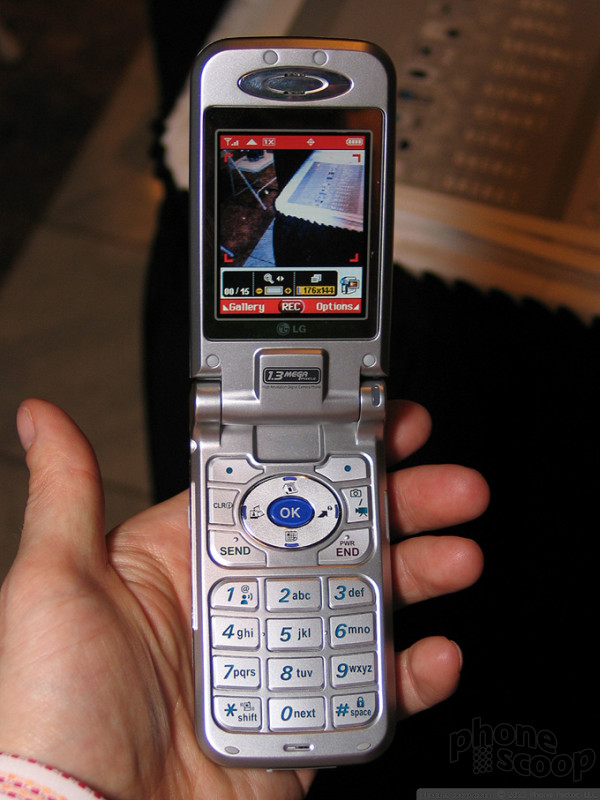











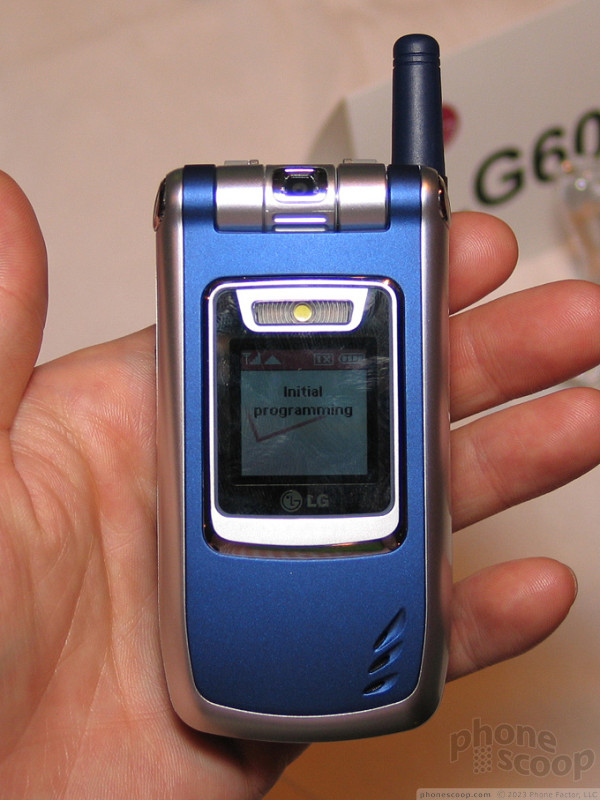





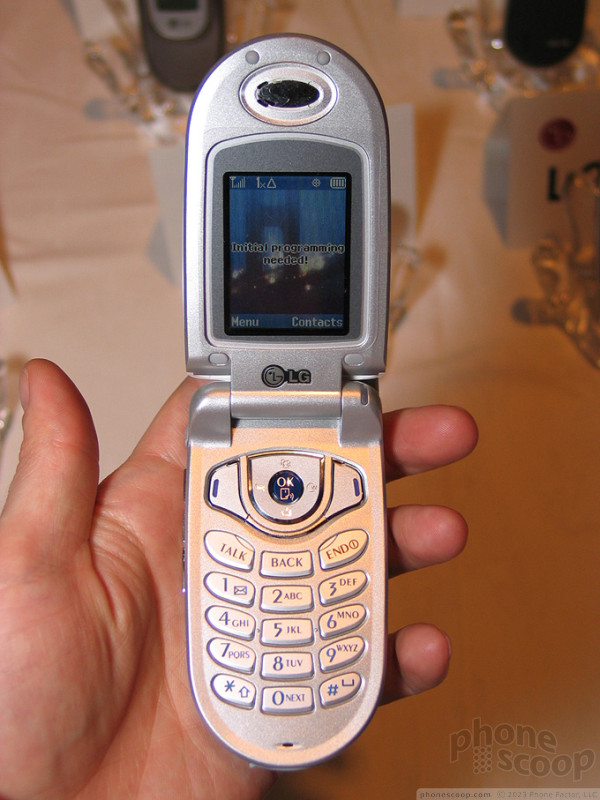





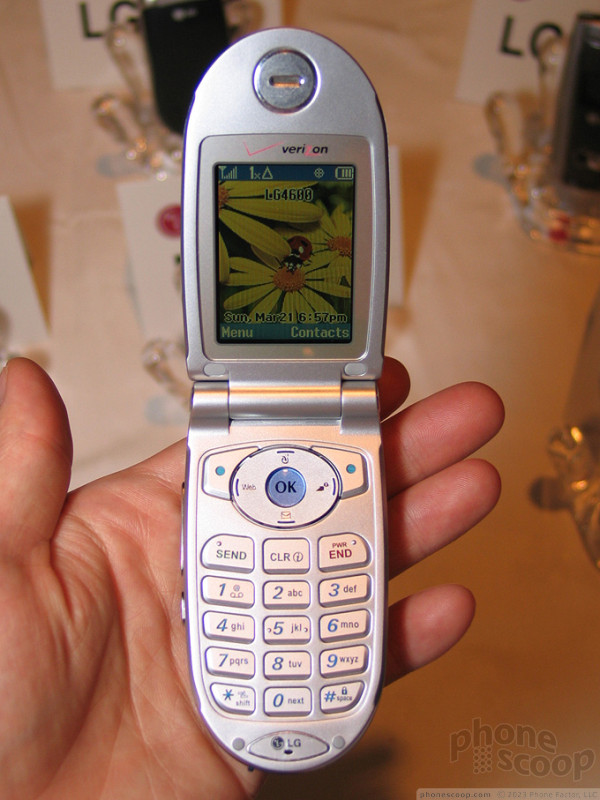



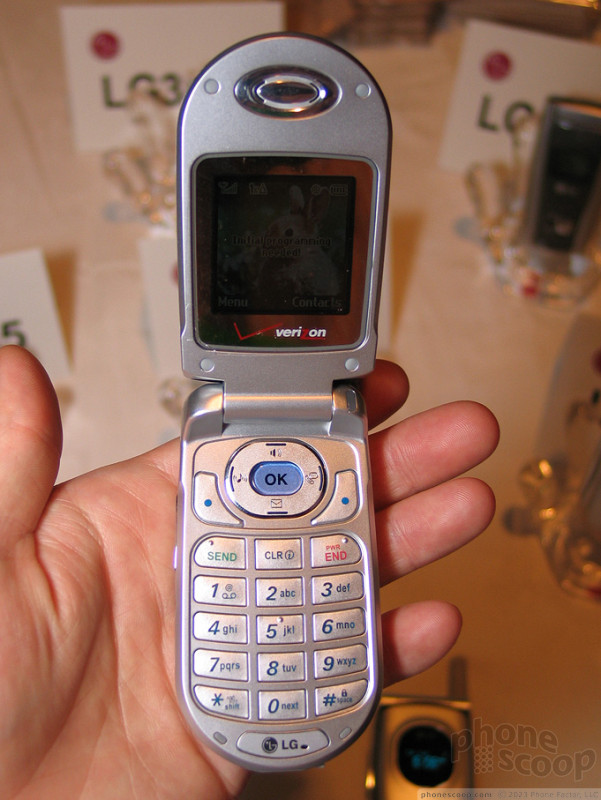




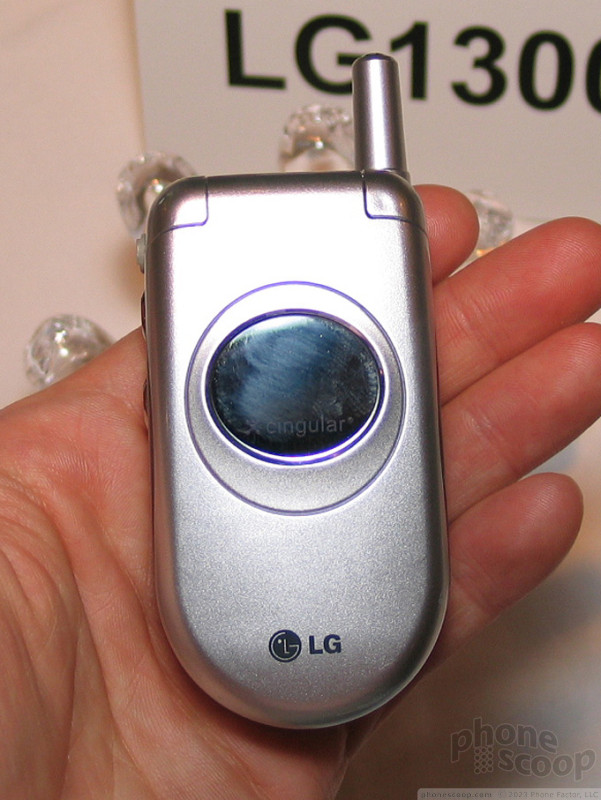





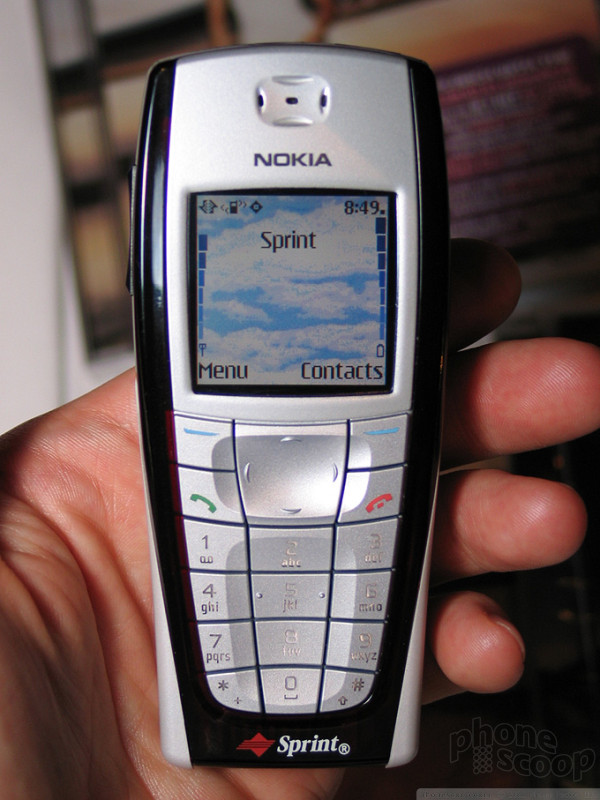







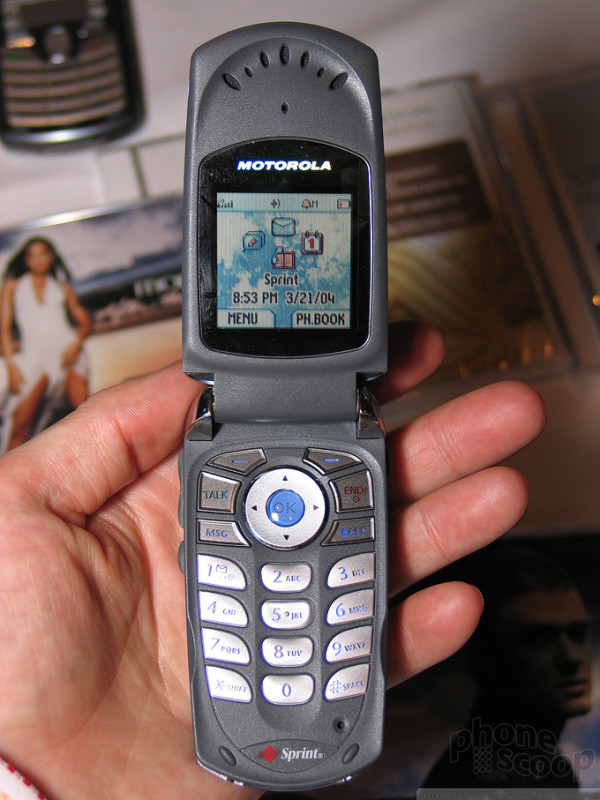








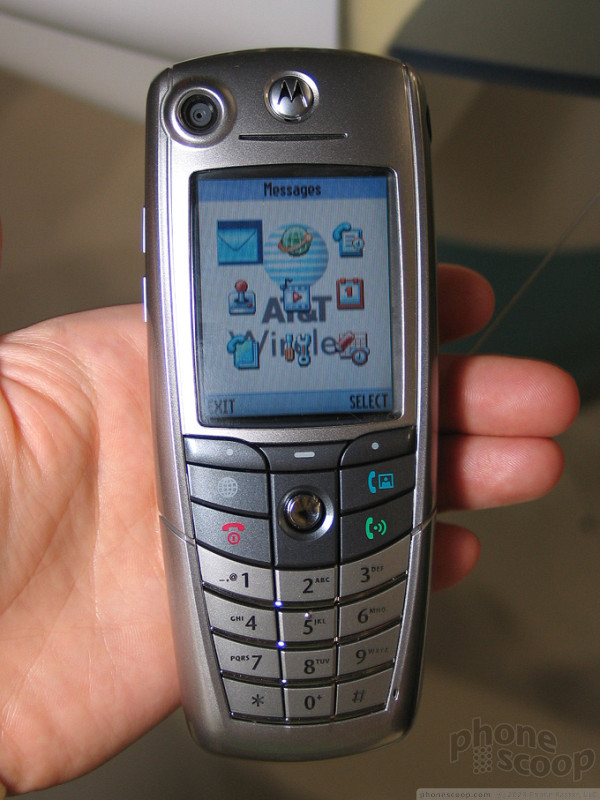





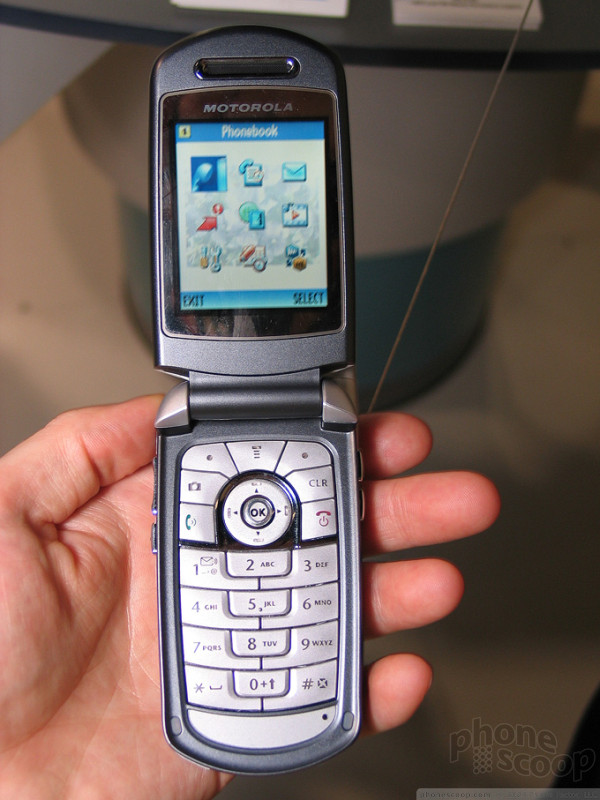






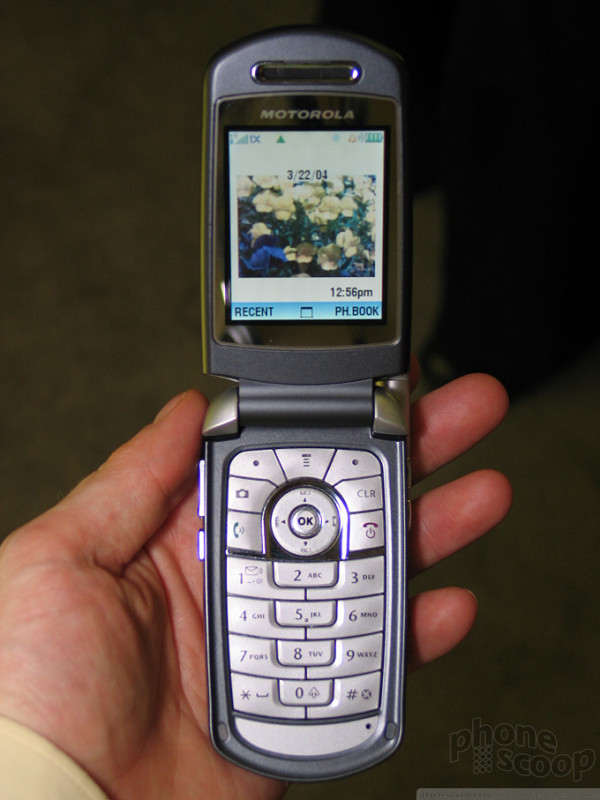










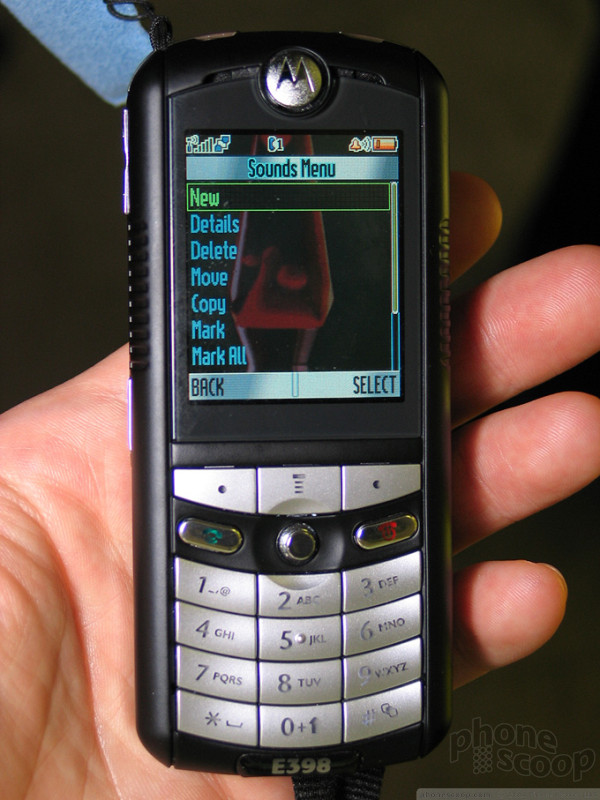






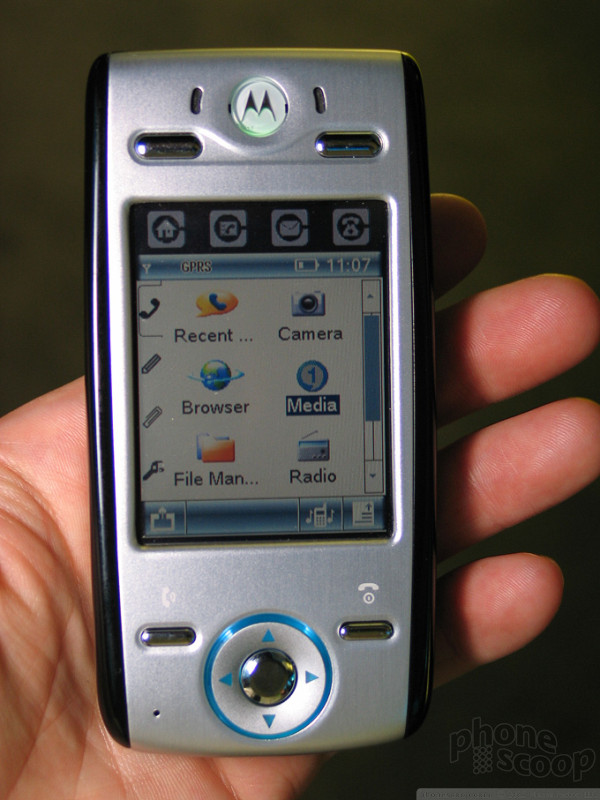





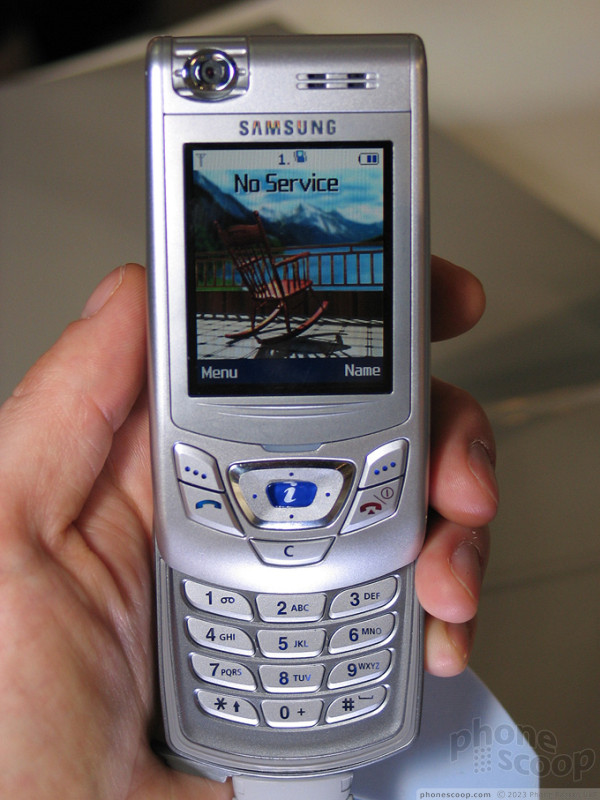




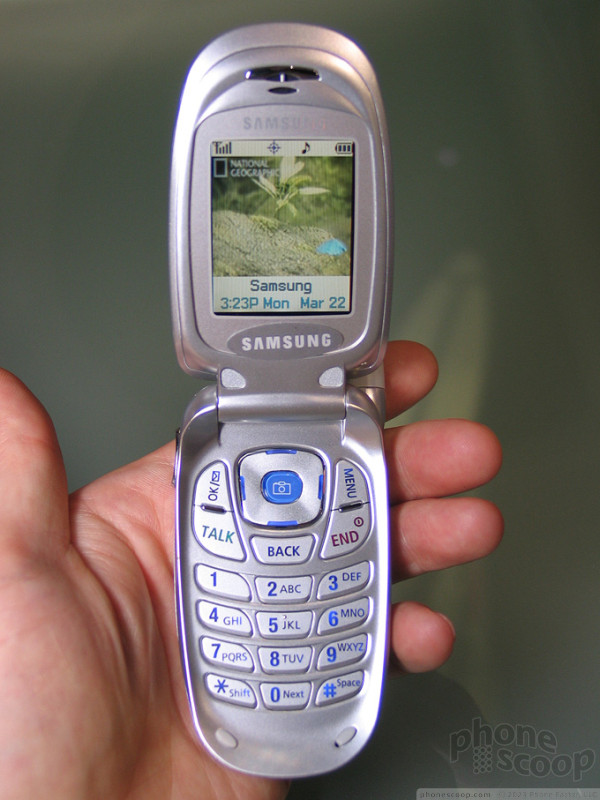



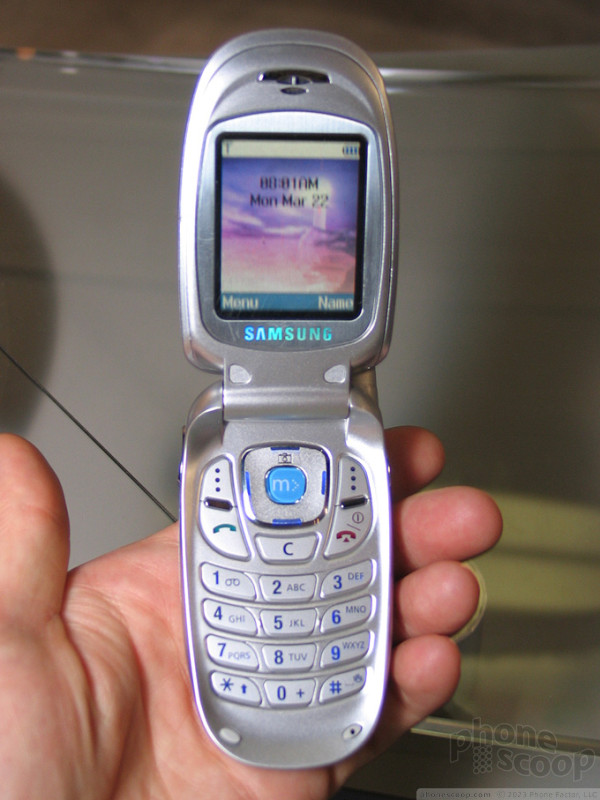



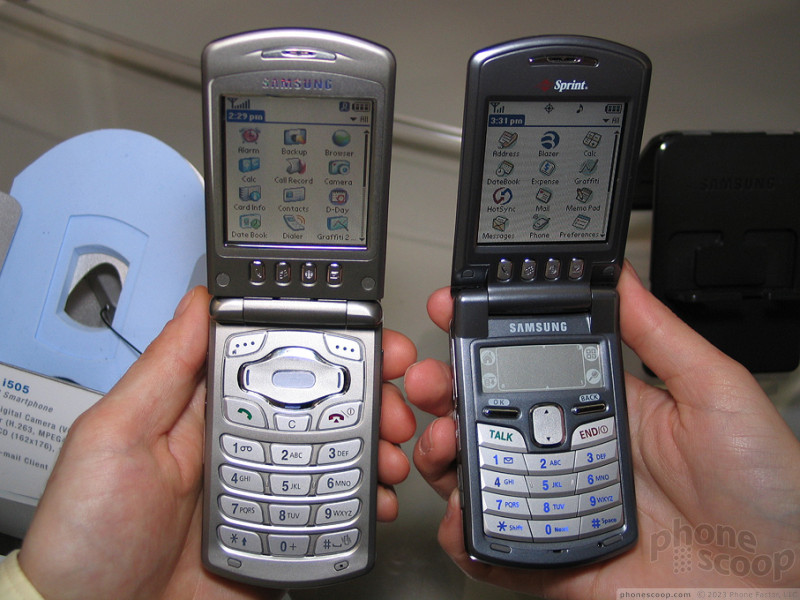




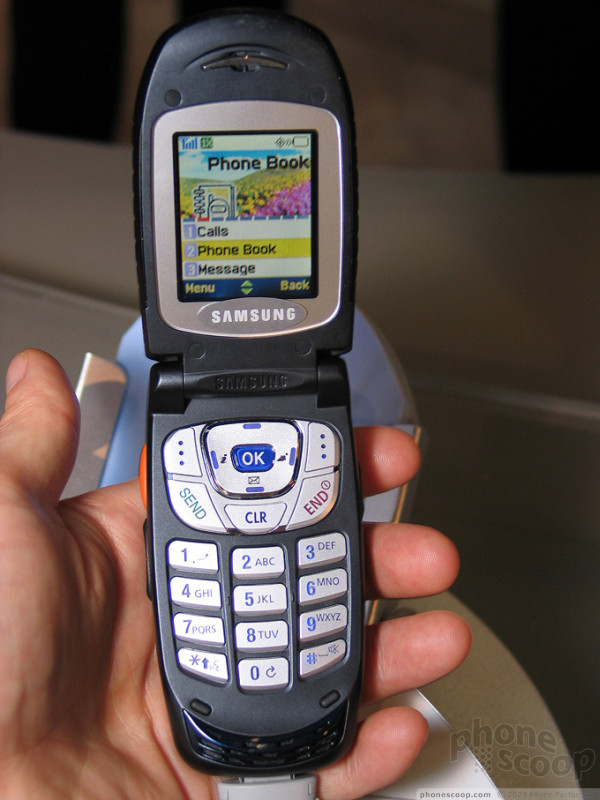



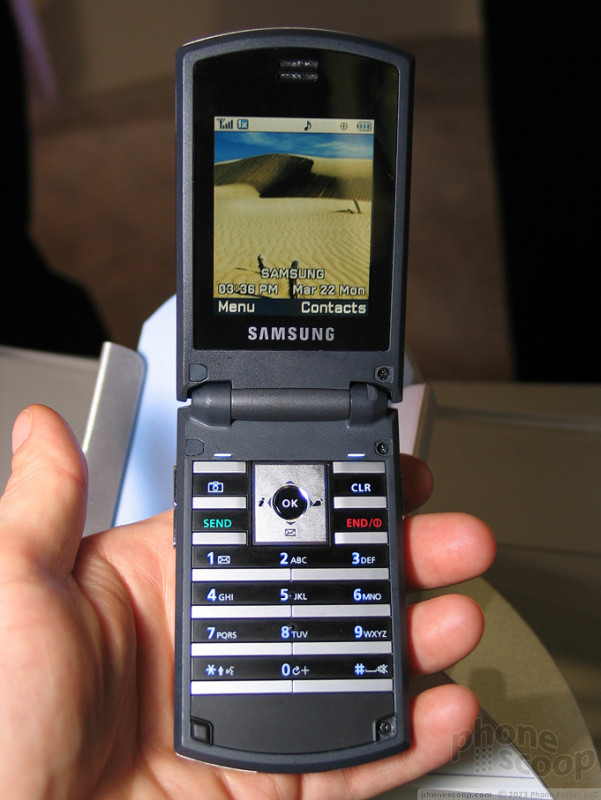





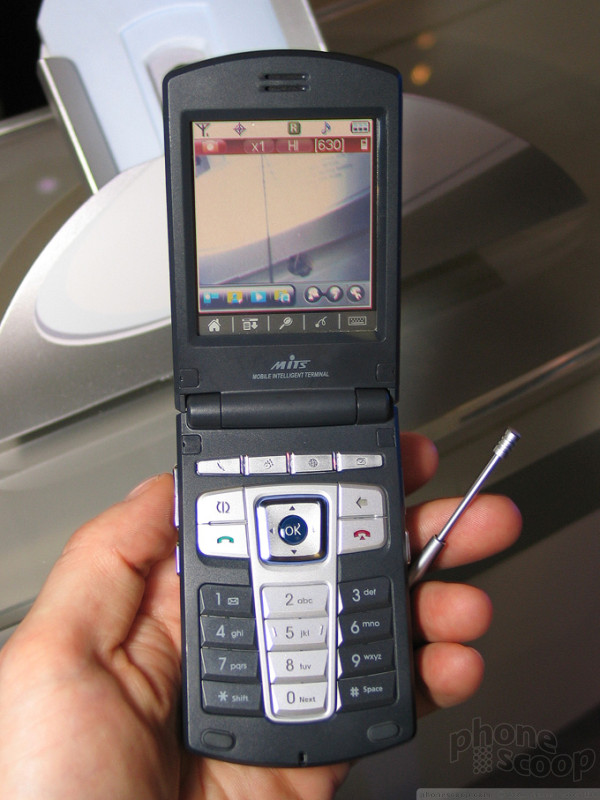






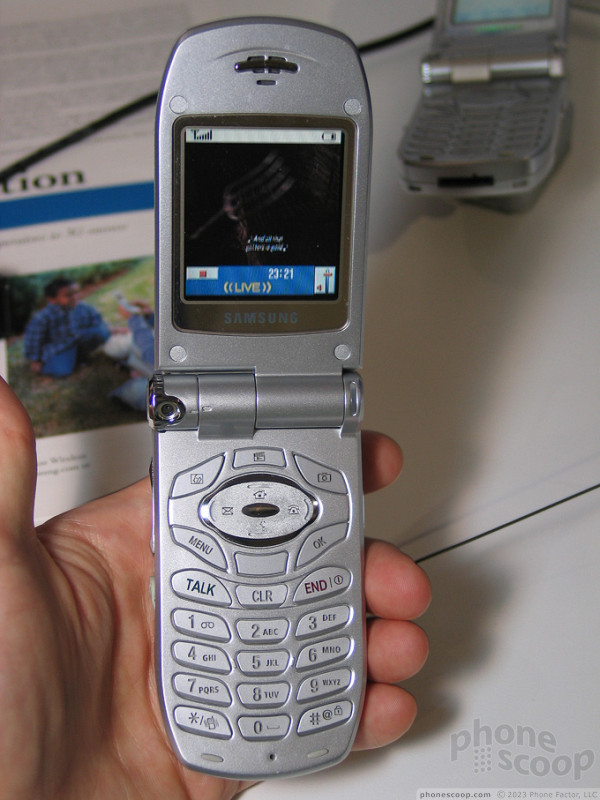



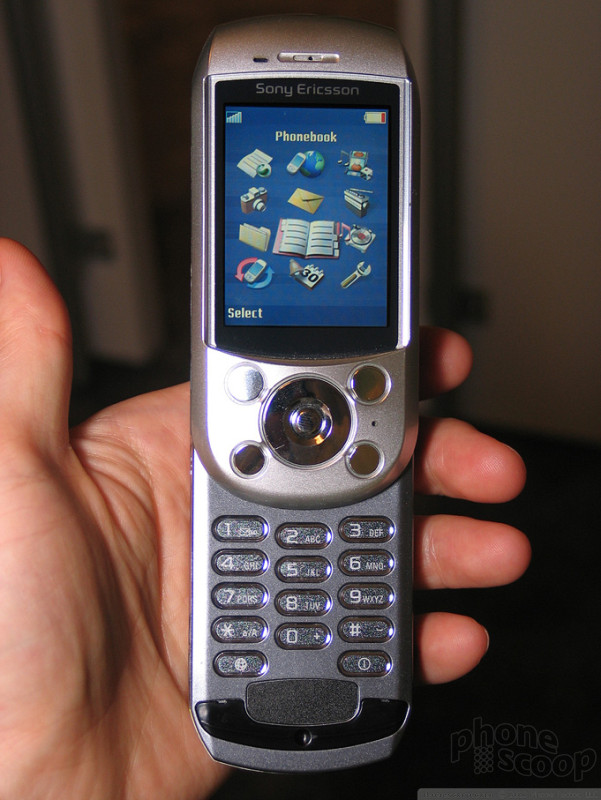








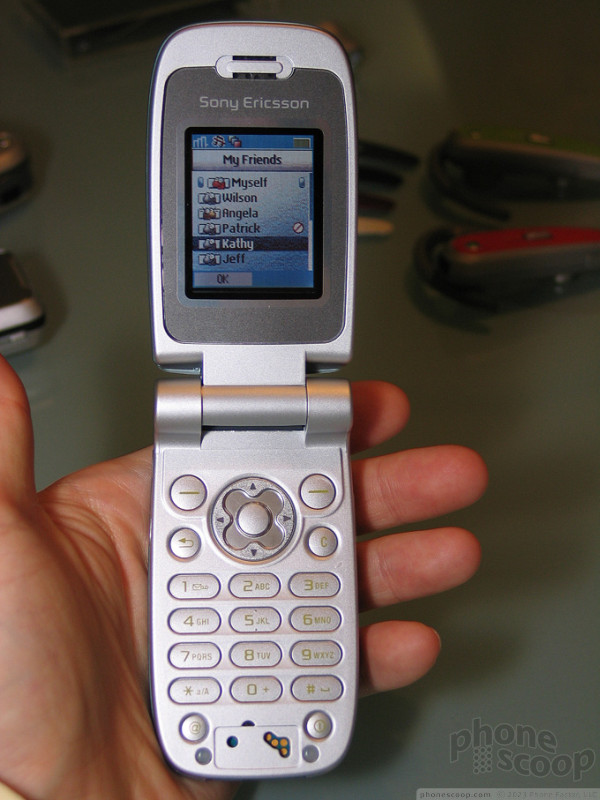





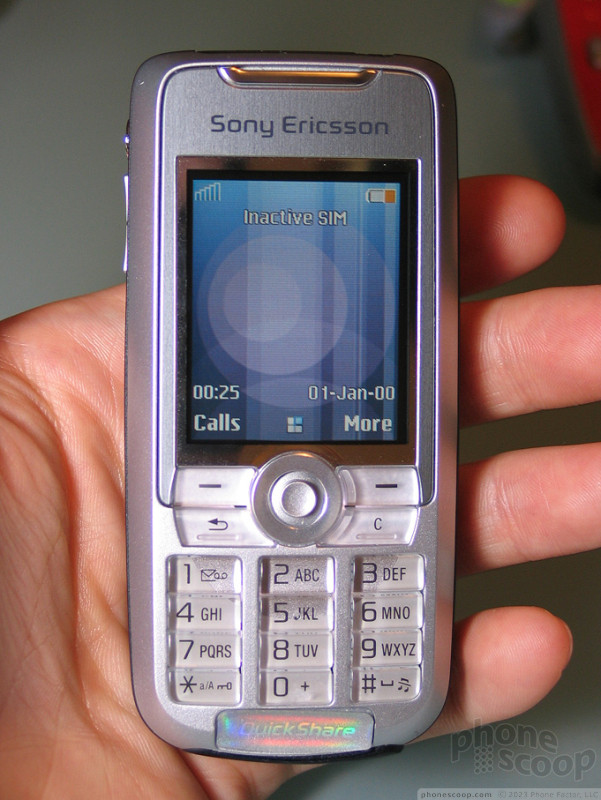


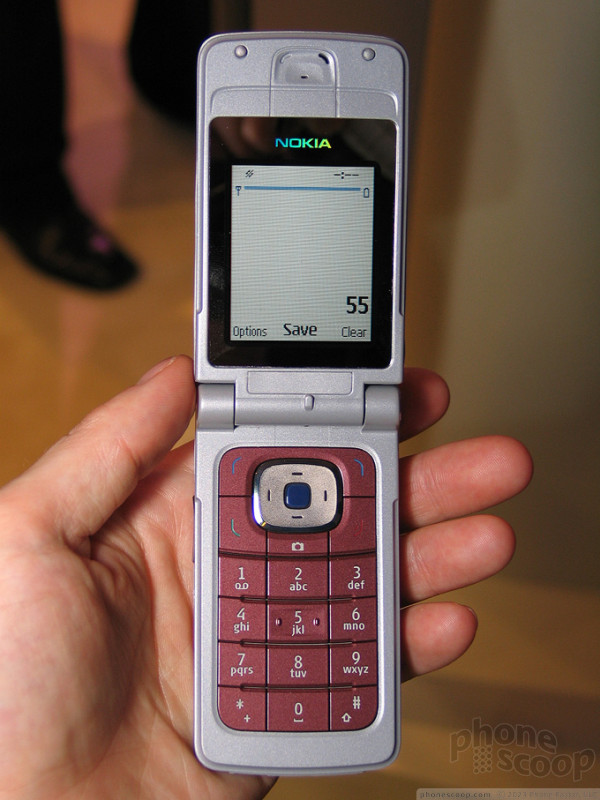













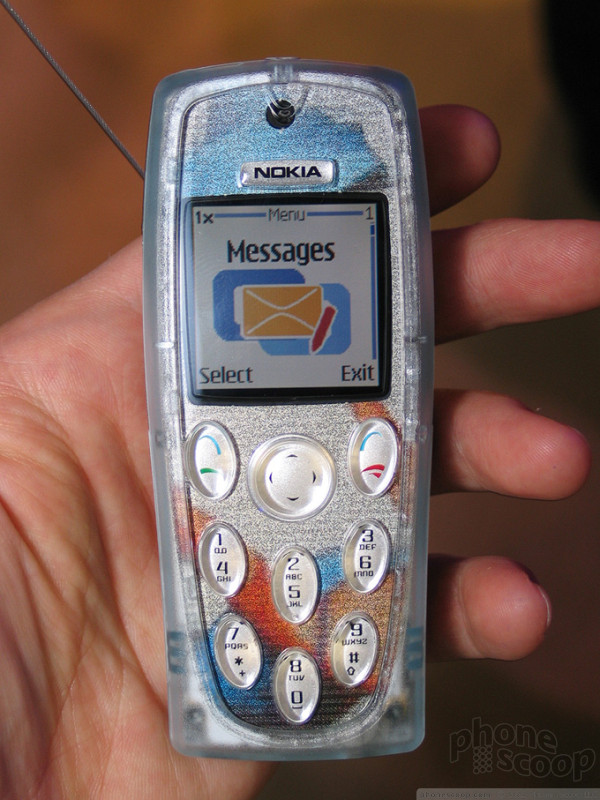




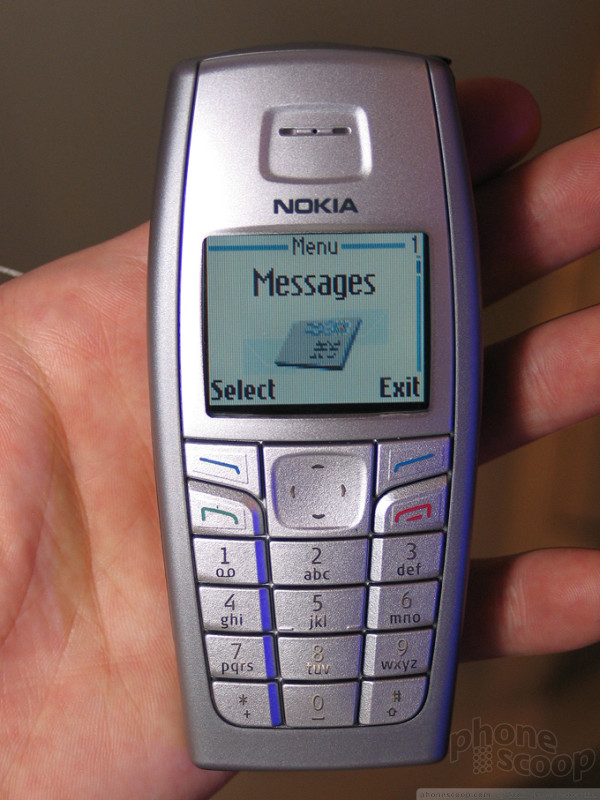


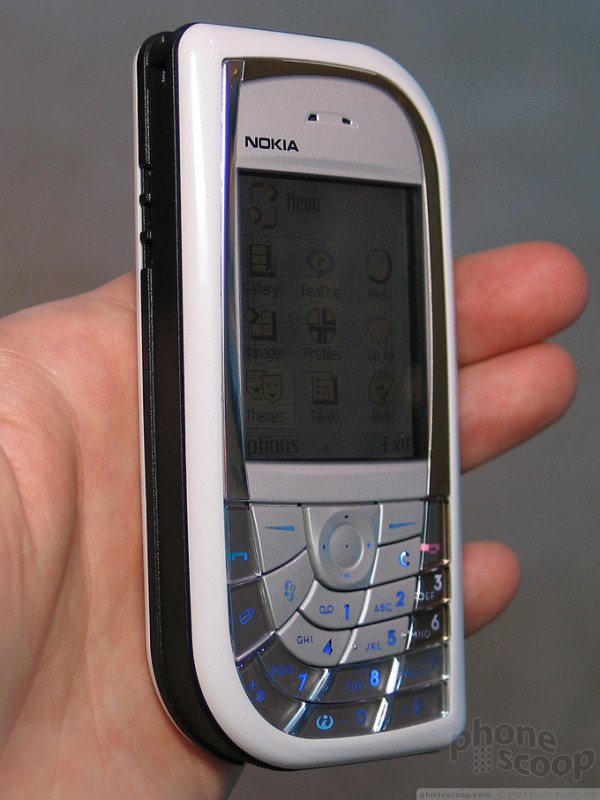








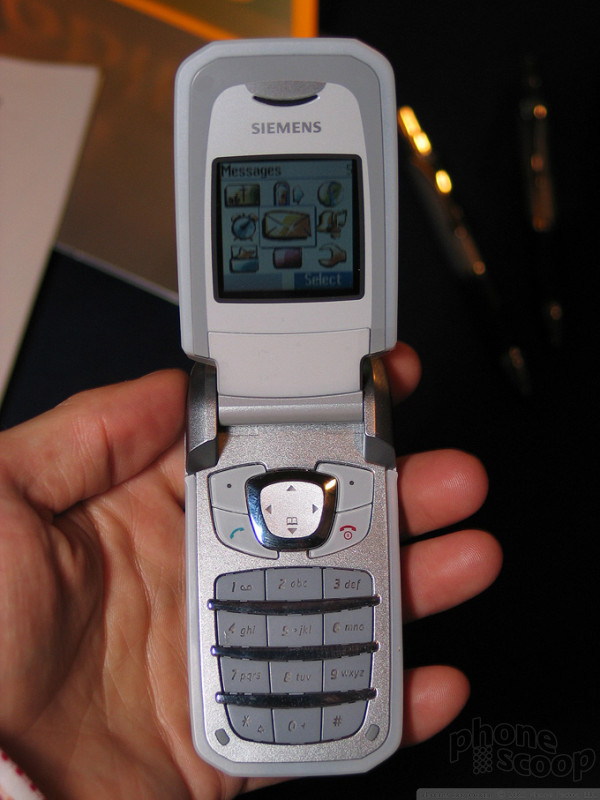








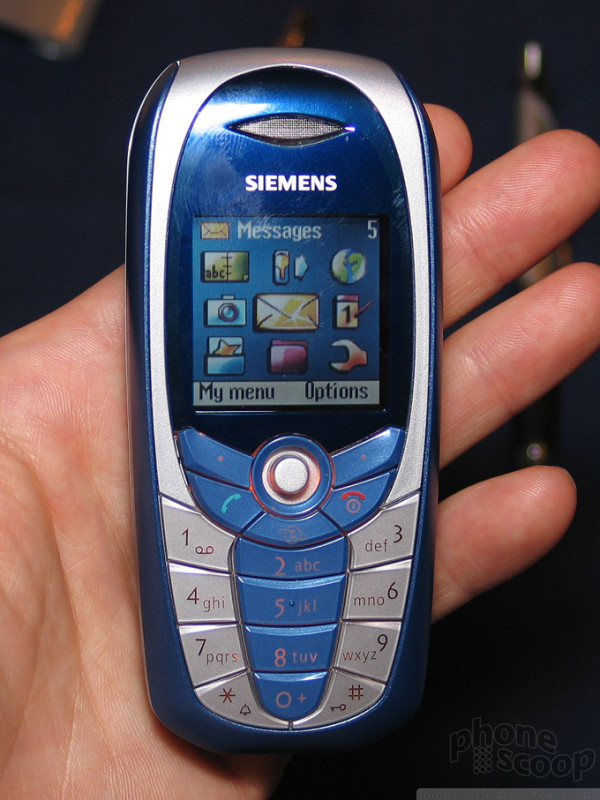






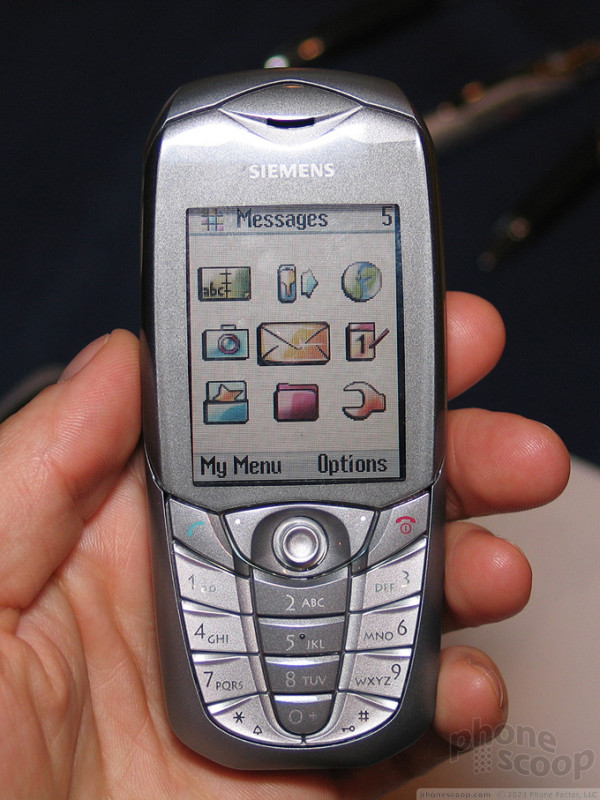








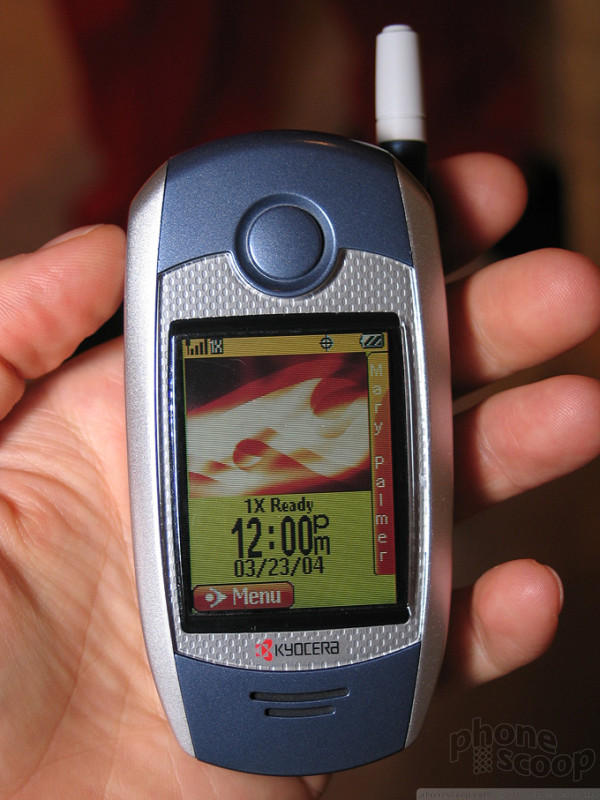






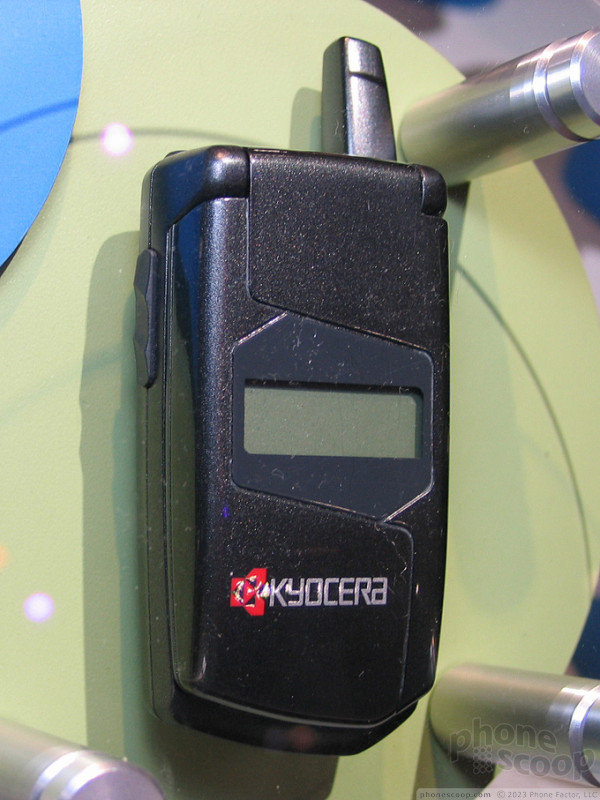



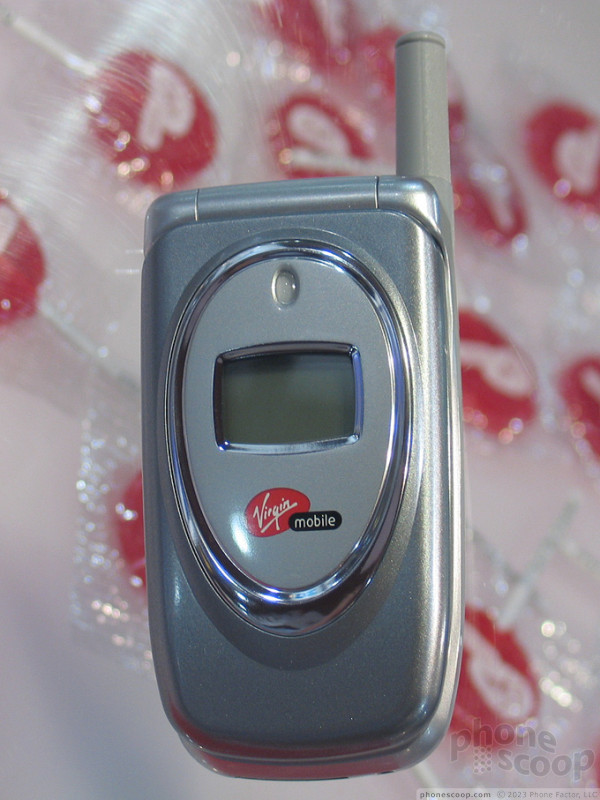






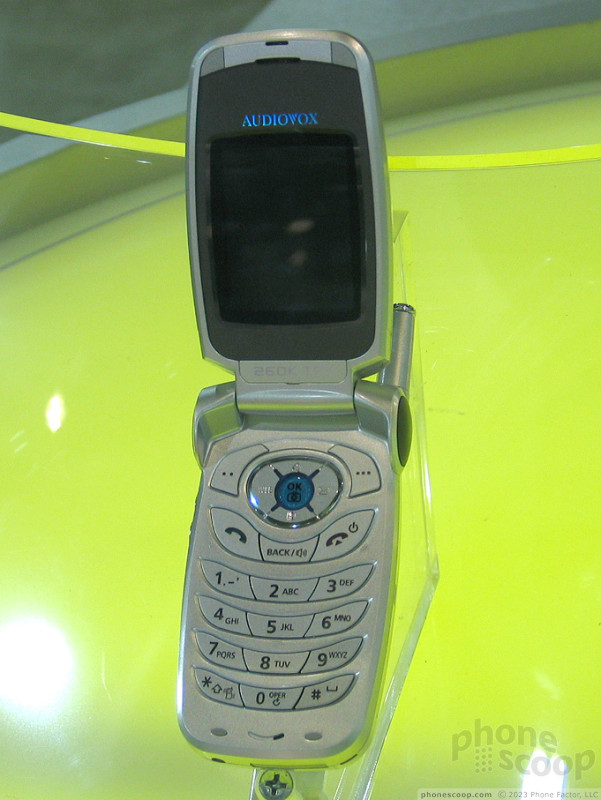





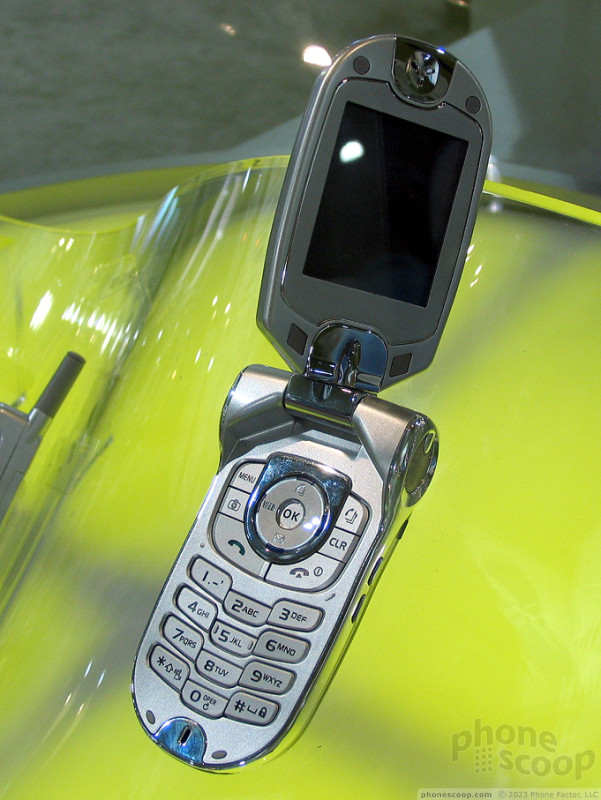






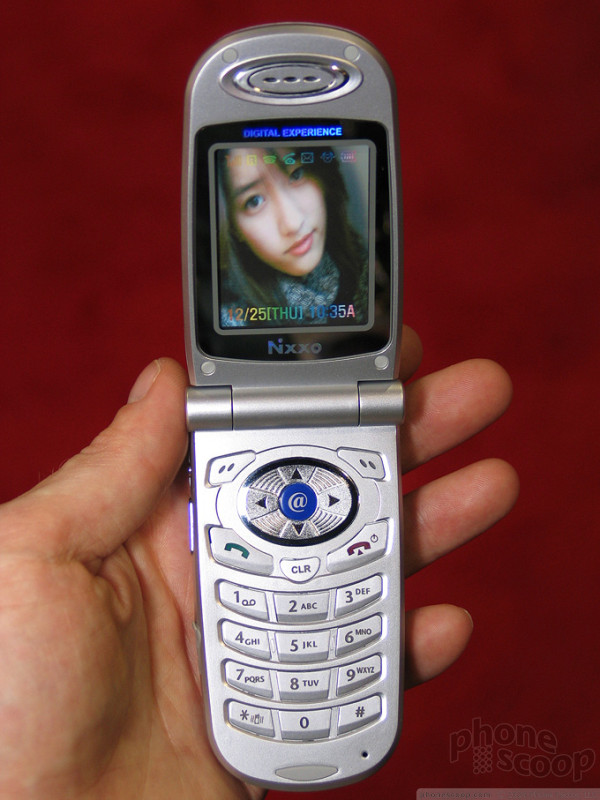




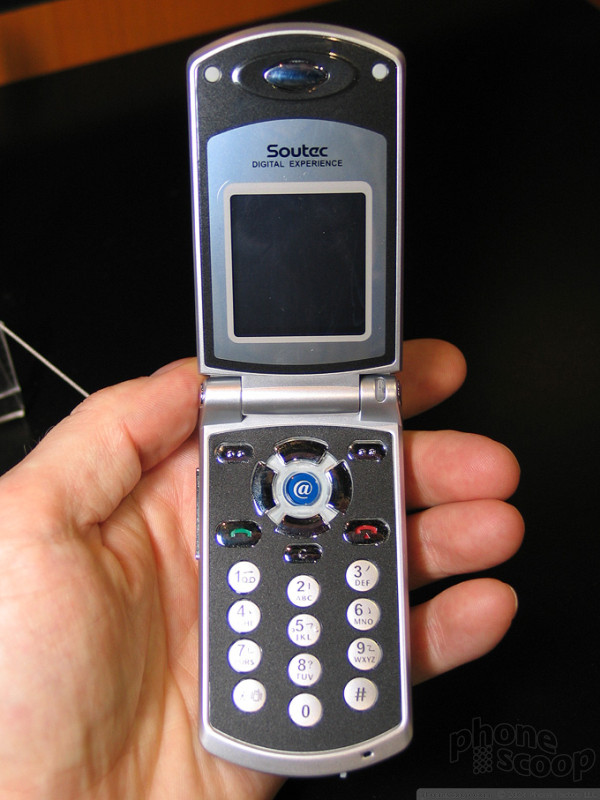





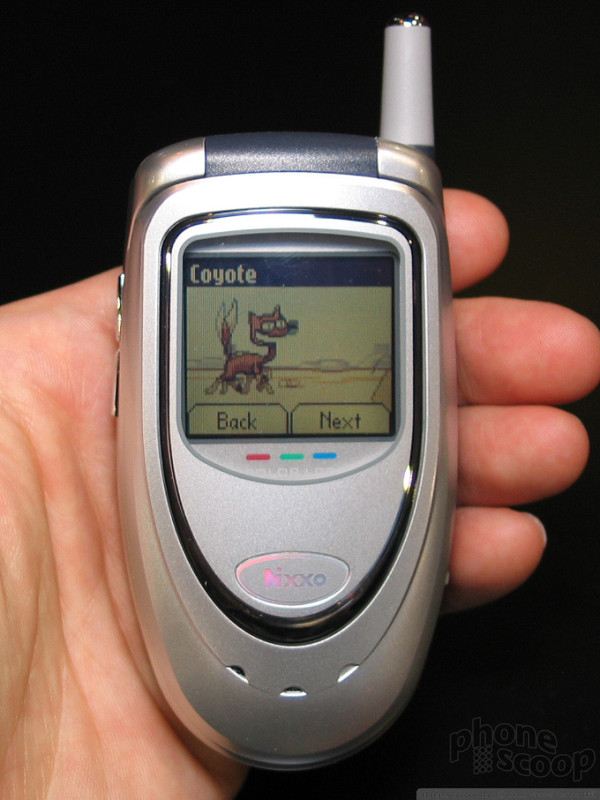




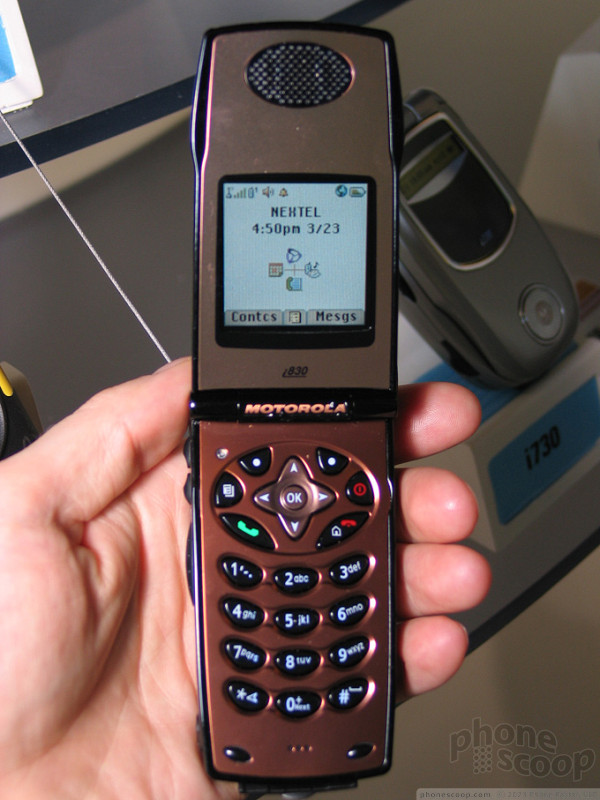









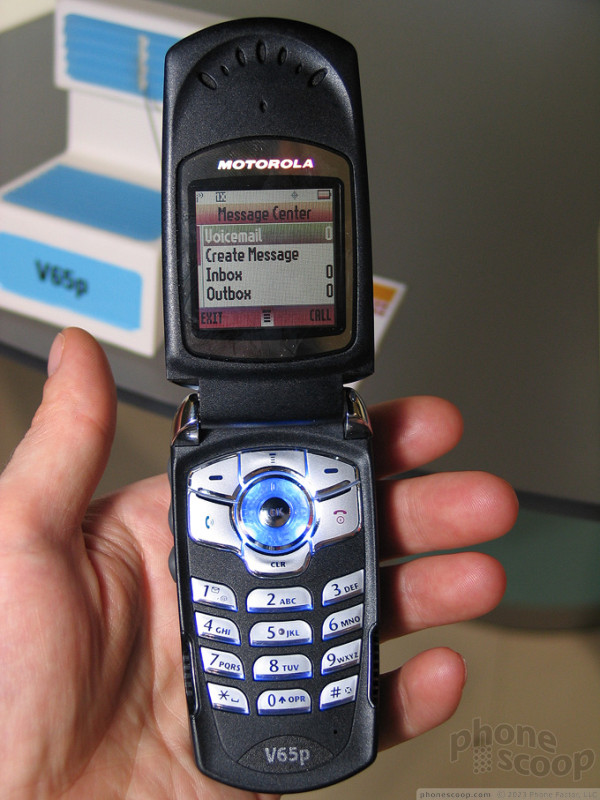





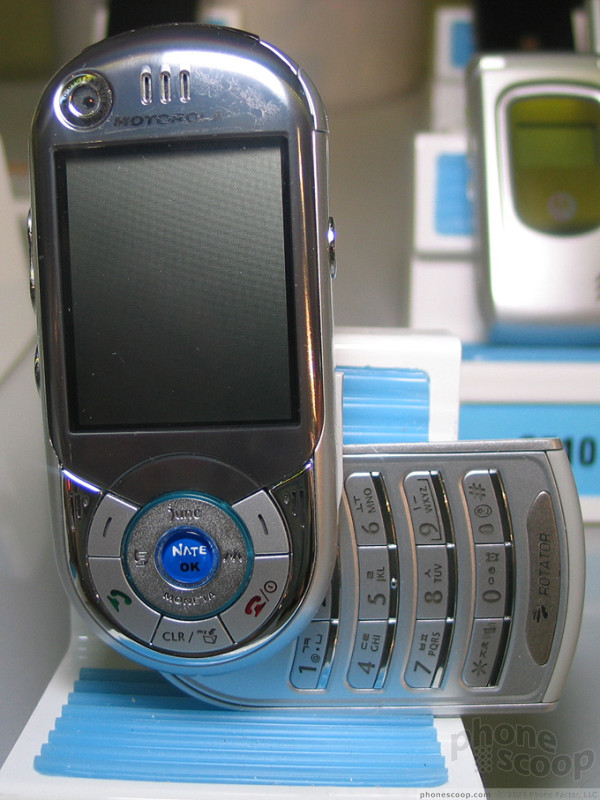



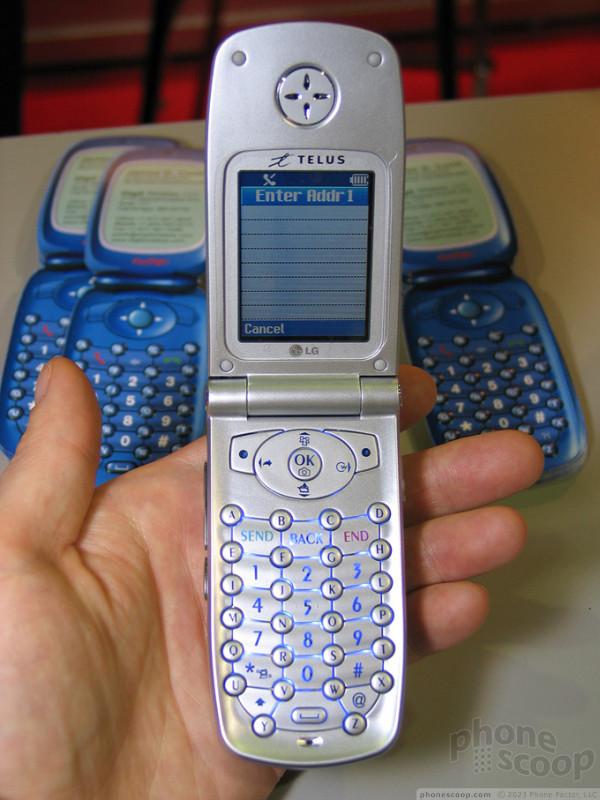



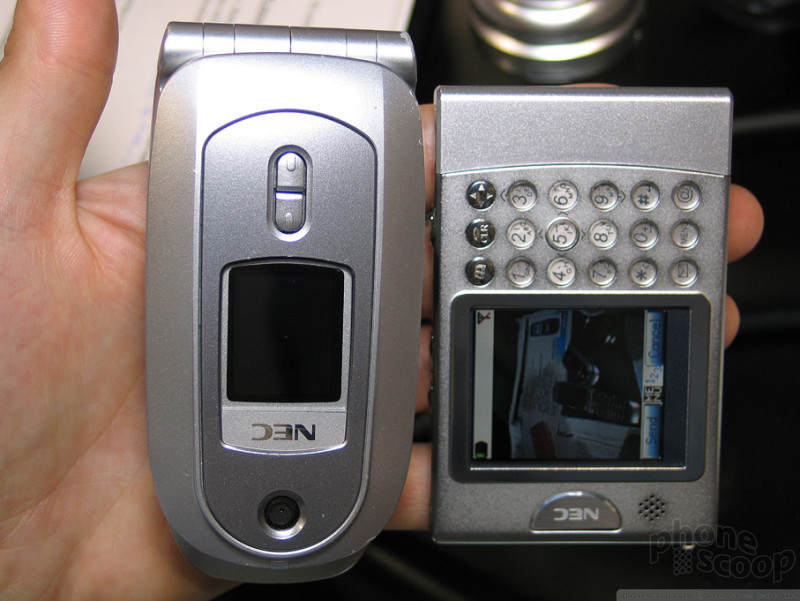






 iPhone 14 Plus Offers a Big Screen For Less
iPhone 14 Plus Offers a Big Screen For Less
 Samsung S24 Series Adds More AI, Updates the Hardware
Samsung S24 Series Adds More AI, Updates the Hardware
 iPhone 16 Brings More Features to All Price Points, Including New Camera Control
iPhone 16 Brings More Features to All Price Points, Including New Camera Control
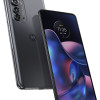 Motorola's new Edge Offers a Lot for $500
Motorola's new Edge Offers a Lot for $500
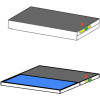 Foldable Google Pixel Confirmed by FCC
Foldable Google Pixel Confirmed by FCC

